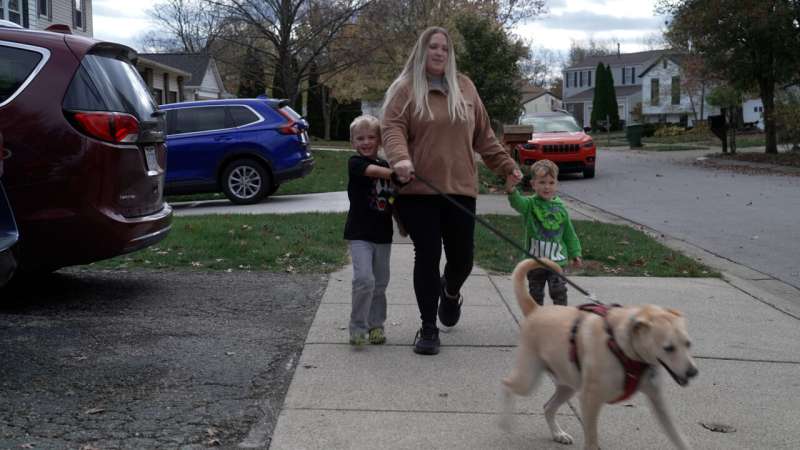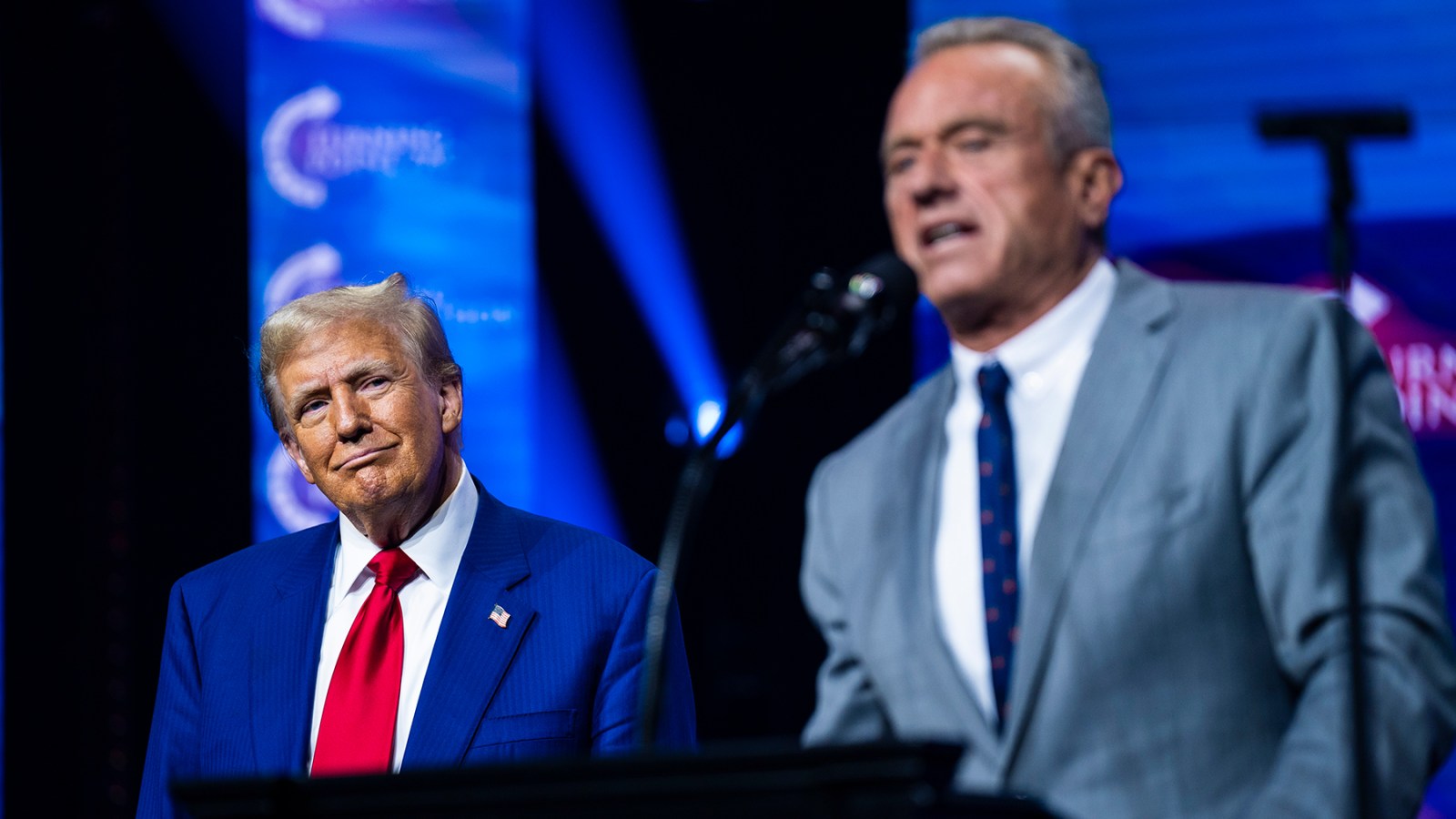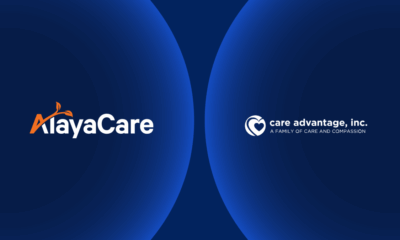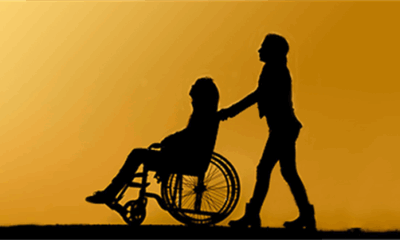Prince and Princess Michael of Kent’s daughter, Lady Gabriella Kingston, said her husband died after deciding on an ‘emergency operation’ to take his own life after suffering adverse effects from the treatment he was given.
Thomas Kingston, 45, died of a gunshot wound to the head at his beloved parents’ home Cotswolds on 25 February.
Rachel married Queen Gabriella at St George’s Chapel, Windsor Castle, in 2019 with the Queen and her husband the Duke of Edinburgh among the guests.
At an inquest into her death held at Gloucestershire Coroner’s Court on Tuesday, Lady Gabriella, 43, said people needed to be warned about the effects of drugs used to treat mental health conditions or more people could die.
In a statement read by senior detective Katy Skerrett, Miss Gabriella said: «(The job) has been challenging for her for many years, but I strongly doubt that it would have led to her taking her own life, and it seemed to and weight.improved.
‘If there was something that was bothering him, I’m sure he would have said that he was struggling a lot.
‘The fact that he took his own life in the home of his beloved parents suggests that the decision was the result of sudden impulse.’
He said he believed her death «may have been precipitated» by an adverse reaction to medication she had started, and then stopped, weeks before her death.

Thomas Kingston (left) died of a gunshot wound to the head, a pathologist found

Mr Kingston (pictured), the husband of Lady Gabriella Windsor, took his own life after an adverse reaction to the medication he was prescribed, an inquest heard.

Mr Kingston watched the race with Queen Camilla from the Royal Box at Ascot in June 2023.
He was initially prescribed Sertraline – an anti-depressant – and Zopiclone, a sleeping pill, by a GP at the Royal Mews Surgery – a practice used by royal staff – after complaining of difficulty sleeping after of stress at work.
Mr Kingston complained that this did not make him feel better and his doctor switched him from Sertraline to Citalopram, a serotonin reuptake inhibitor (SSRI) used as an anti-depressant. .
‘The lack of any evidence of propensity seems to me very likely that he had a bad reaction to the pills that caused him to kill himself,’ Lady Gabriella said.
‘I believe that anyone taking pills like these should be warned about the side effects to prevent future deaths.
‘If this can happen to Tom, it can happen to anyone.’
In the first days of his death, Mr. Kingston had stopped taking medication, and toxicology tests showed caffeine and a small amount of zopiclone in his system.
In his final weeks, Ms Gabriella said, her husband «seemed normal», except the morning after he first took zopiclone, which she said made him seem » want to faint».
In her statement, she described their marriage as one of ‘deep love and trust’ and said she had never expressed suicidal thoughts to herself or others.
He also said he was deeply affected by his friend’s suicide and «the negative impact it had on other people’s loved ones».
Miss Gabriella cried as she sat in the court of inquiry when her statement was read.

The couple are pictured here at the Wimbledon Tennis Championships in July 2019

Lady Gabriella and Thomas Kingston had official photos taken on their wedding day – here with the Queen and Prince Philip sitting to their right.

Thomas Kingston and court side Lady Gabriella Kingston on day two of the Wimbledon Tennis Championships last year
Mr. Kingston’s father, William Martin Kingston, wept as he described finding his son in the locked bathroom of the annexe, having used a doorknob to break the door.
He told the court that his son has always had a strong, unstable character, as he previously suffered from pain that left him needing help to climb the stairs.
Mr Kingston added that before his son’s death there did not appear to be a suicide investigation, and there was no will or note, describing the process as ‘very active and it was just ‘out of character’.
Closing the story, Ms Skerrett, Gloucestershire’s chief constable, said: ‘Mr Kingston took his own life with a self-inflicted gunshot wound to the head.
‘The evidence of his wife, his family and his business partner all support the lack of intent to kill himself. He was having bad side effects from the medication he had just been given.’
Dr David Healy, a psychiatrist who gave evidence at the hearing, said zopiclone could also cause anxiety, while sertraline and citalopram were both serotonin reuptake inhibitors (SSRIs), and while exactly the same.
Dr Healy said Mr Kingston’s complaints that sertraline continued to bother him was a sign SSRIs were ‘not working for him’, and he should not have been prescribed the same thing again.
He said the guidelines and labels for SSRIs were not clear enough about using the drug first, or what the effect would be when switching from one to another.
He said: ‘We need a clearer statement that these drugs can cause people to kill themselves who otherwise wouldn’t.
Speaking to the doctor, Martin Porter, the family’s adviser, said: ‘The family is not to blame (her doctor) Dr Naunton Morgan, he worked like a good doctor.
‘But the question is whether there is enough advice to doctors about SSRIs.’

Queen Camilla, King Charles III, Lady Gabriella Windsor and Thomas Kingston watch the Royal Box Race as they attend day 5 of Royal Ascot 2023.
Miss Gabriella paid tribute to her husband in a joint statement with his family after his death, describing him as ‘a special man who brightened the lives of all who knew him’.
They described his death as ‘a huge shock to the whole family’.
The King and Queen sent their ‘heartfelt thoughts and prayers’ to Miss Gabriella, known as Ella, and Mr Kingston’s parents and siblings.
Mr Kingston was buried in a private service on March 12.
Around 140 friends and family, including Prince William, Queen Gabriella’s parents Prince and Princess Michael of Kent, and Princess Alexandra, gathered at the Chapel Royal at St James’s Palace in London for the funeral.
Lady Gabriella is King’s second cousin. Both are great-grandsons of King George V.
Mr. Kingston was a director of Devonport Capital, which specializes in providing financing for companies in the economic market.
The University of Bristol graduate had also worked in Baghdad, Iraq, to secure the release of hostages after joining the Foreign Office embassy.
When an inquest opened in March, Gloucestershire chief constable Katy Skerrett said Mr Kingston’s body was found in an outhouse at his parents’ home.
Mofekotsana said that Mr. Kingston was visiting his parents, and after lunch, his father went out to walk the dogs.
‘When he came back, Mr Kingston was not in the house’, he said, and after about 30 minutes his mother went to look for him.
‘His father forced his way into the locked building when no answer could be found.’
For free, confidential support, call Samaritans on 116 123, visit samaritans.org or visit www.thecalmzone.net/get-support.























